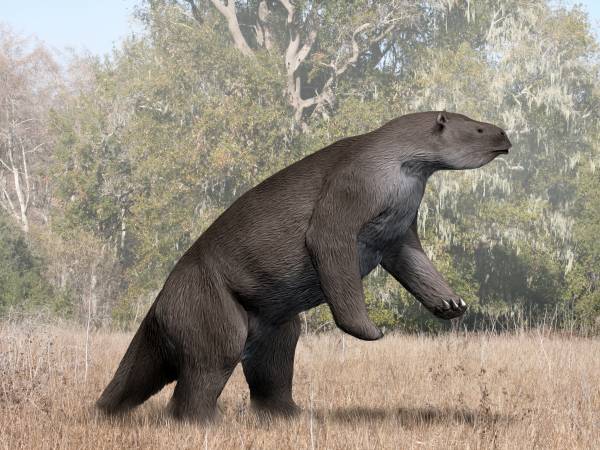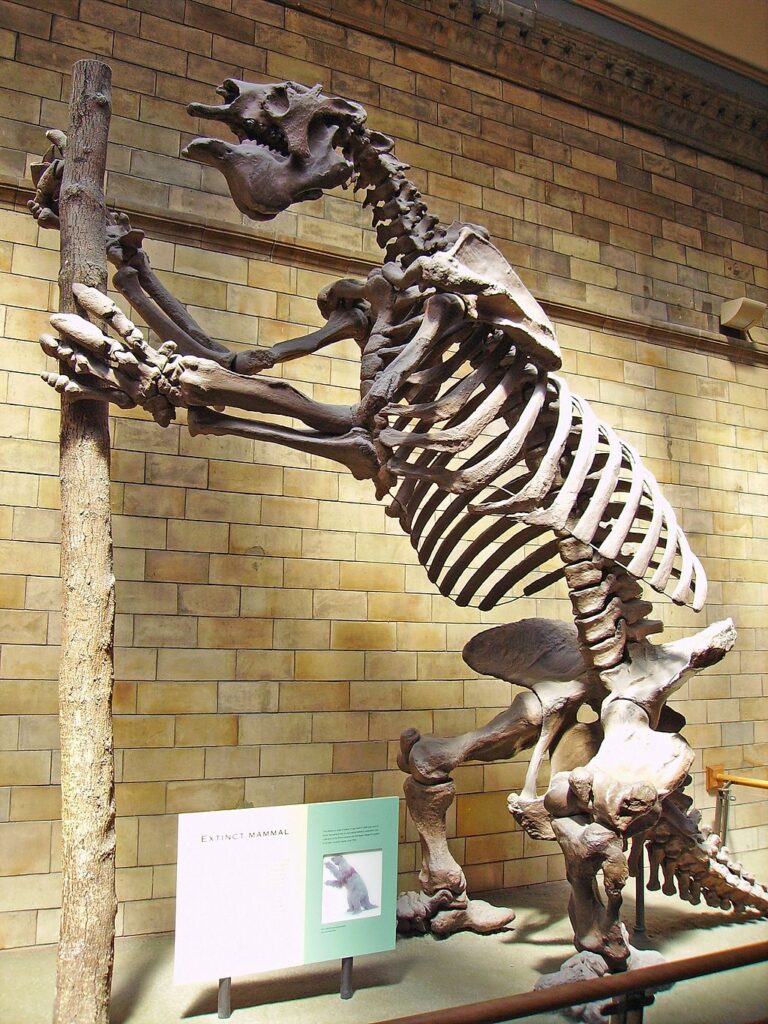Prehistoric Sloth-Like Creatures May Have Roamed the US
An Annals article and lecture given by Samuel L. Mitchill in 1823 presented paleolithic research suggesting that the territory of the Megatherium americanum may have extended farther north than scientists had previously thought.
Published November 28, 2023
By Nick Fetty
Digital Content Manager

Image by Nobu Tamura. Licensed via CC BY-SA 4.0.
No changes were made to the original work.
Massive sloth-like creatures may have been roaming the land that we now call the United States during the Pleistocene Epoch (between 2.6 million and 11,700 years ago), according to research presented by The New York Academy of Sciences’ first president two hundred years ago this month.
Samuel L. Mitchell, a prominent physician, scientist, politician, and founding member of the Academy (then known as the “Lyceum of Natural History in the City of New York”) gave a talk at the Lyceum on November 17, 1823, entitled “Observations on the teeth of the MEGATHERIUM recently discovered in the United States.”
This was followed by an article by the same name published in the inaugural issue of Annals of the New York Academy of Sciences in 1824. The article and lecture covered findings from Mitchell’s paleolithic research which suggested that the territory of the Megatherium (Megatherium americanum), a now-extinct species of giant ground sloth, may have extended farther north than scientists previously thought. This marked the first such recorded discovery north of the equator.
A Noteworthy Discovery
Mitchell received a set of fossil teeth that were discovered on Skidaway Island, just south of Savannah, Georgia. Mitchell noted that the teeth marked a noteworthy scientific discovery at that time, but bones that were discovered alongside the teeth were not able to be studied because of improper handling.
“These teeth are very remarkable, and differ much from any hitherto discovered in North America,” Mitchell wrote, adding “…there can be no doubt that the teeth in question belong to that extinct species, [known as] the Megaterium.”

Photo by Ballista.
Licensed via CC BY-SA 3.0 DEED.
No changes were made to the original work.
Built Upon Previous Findings
This discovery built upon similar findings from the late 18th century (about fifty years prior) when a near-perfect skeleton of the Megaterium was discovered near Buenos Aires, Argentina. Years later, another specimen was discovered in Paraguay. The full skeleton was on display at the Royal Cabinet of Madrid (Spain) at the time Mitchell published his findings. Charles Darwin, another prominent member in the early history of the Lyceum, would go on to discover remains from another Megatherium in Argentina between 1832 and 1833.
The Megatherium was described as similar in size to a rhinoceros or elephant. Biologically, the furry creature occupied a space between a sloth (Bradypus Lin.) and an ant eater (Myrmecophaga Lin.), though it shared more characteristics with the former. Based on the form of the teeth and the structure of the claws, researchers hypothesized that the creature subsisted on vegetables, predominately roots.
5 1/2 Inches in Length
Mitchell described the fossils in his possession as “one tooth entire, with the exception of the fang which is broken transversely off, and the half of another, with the fang separated.” Each sample was square in shape, with rounded edges. Their approximate length of five and a half inches matched the description provided by previous researchers, indicating to Mitchell that these teeth were, in fact, likely those of a Megatherium. The teeth were black in color and the cutting edges were well-worn, indicating the animal’s likely advanced age at the time of its demise.
Mitchell, who arranged the Lyceum’s first formal meeting in 1817, concluded his paper by reemphasizing the importance of this discovery within the context of the natural history of the United States.
“Although, from the circumstances previously mentioned, it is hardly possible that a complete skeleton will be found, yet enough has been discovered to satisfy us, that the United States, which contains so many relics of huge animals, may add to her ‘giant brood,’ the Megatherium.”
